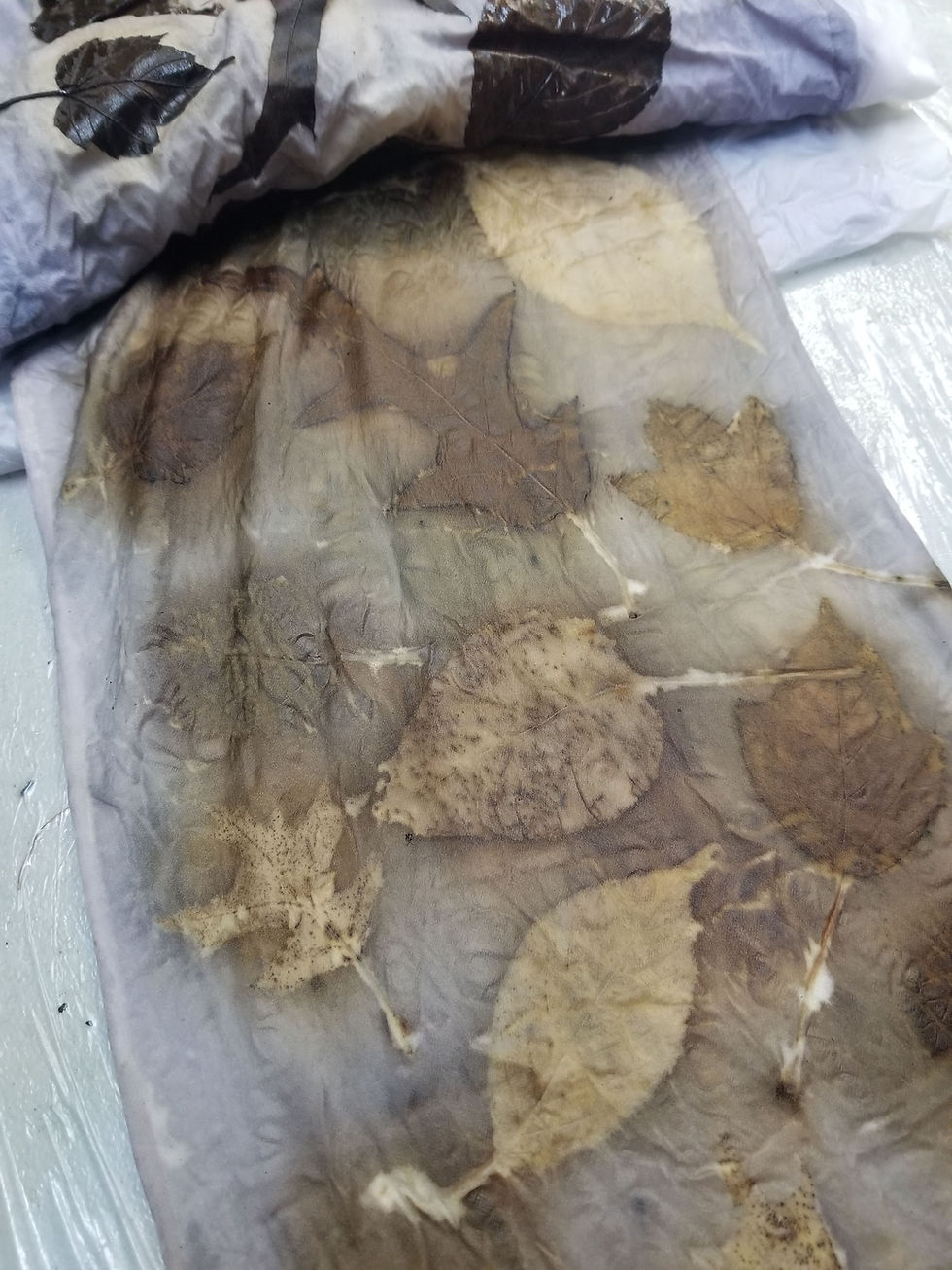
Scarves Dyed With Natural Dyes

Since December, 2019, most of my natural-dye scarves have been sold through the shop at the non-profit Pyramid Atlantic Community Art Center in downtown Hyattsville, Maryland. I have a few recently dyed scarves on hand.
If you are interested in something you see but are not local, please contact me to see if I have something on hand that I have not posted or taken to the shop.


Ecoprinting
By taking advantage of reactions between tannins in leaves, iron, and mordanted fabric, it is possible to create the most stunning leaf prints. This technique was pioneered by India Flint in Australia, and has since become popular world-wide. Each piece is created by carefully arranging leaves on pre-mordanted fabric, wrapping tightly to maintain contact between the leaves and fabric, and steaming or simmering in a dye pot for several hours. The results are well worth the several days it takes for each piece.
I dye silk and cotton scarves. After ~20 years of experimenting I have settled mostly on crepe de Chine for silk, with a preference for stonewashed crepe de Chine. The combination of hand, sheen, and price is ideal. In my heart of hearts I love charmeuse silk but it has become cost prohibitive and I use it only for ecoprinting (described below). I also will use flat crepe for ecoprinting as it seems to give a clearer impression of leaves than crepe de chine. For cotton scarves my current favorite is organic loomstate muslin from Greenfibres in the UK. It is truly luscious and cuddly.
In my natural dye practice I use materials that produce relatively lightfast colors. I also balance dyeing with plants I grow in my garden or collect locally, with dye materials from around the world that I purchase. Although I love dyeing with plants I started from seed and can harvest after they have supplied nectar and pollen to pollinators in my yard, there are too many materials that yield gorgeous colors to limit myself to only local dyes. Additionally, I am not willing to plant invasive species in my yard and would rather by powdered material of such species.
Recently I have been captivated by marigolds (Tagetes spp.) and brown eyed Susan (Rudbeckia triloba) from my yard, and logwood (Haematoxylum campechianum) from Botanical Colors and indigo.

































